建筑师:Morphosis
地点:美国,德克萨斯州,达拉斯
技术与BIM总监:Synthesis
助理建筑师:Good Fulton & Farrell
结构建筑师:Datum工程师
结构顾问工程师:John A. Martin合作有限公司
机电水暖工程师:BURO Happold公司
土木工程师:URS公司
面积:16,722平方米
年份:2012
摄影:Iwan Baan,图片由Morphosis提供
博物馆是集体社会经验和文化形式的建筑,展现了全新的诠释世界的方式。它们包含的知识,保存信息并传递想法;它们激发好奇心,提高认识并创造交流机会。
博物馆作为教育和社会变革的工具,可以塑造我们对于自己以及我们生活的世界的理解。
由于我们的全球环境面临着越来越严峻的挑战,对于自然系统相互依存关系更广泛的了解对于我们的生存和发展将变得更加重要。
自然和科学博物馆在扩大我们对于这些复杂系统的理解上发挥了关键性作用。
游客到博物馆是在市内身临其境地感受大自然的开始,这主要通过得克萨斯州两种本土生态环境:大型原生树冠的树木的森林和一个原生沙漠旱园景色的露台。
旱园景色的露台平缓的倾斜,与博物馆的标志性的石头屋顶连接。整体建筑群可看作是一个大的立方体漂浮在该地的园景底座上。
一英亩由岩石和本地抗旱草构成的起伏的屋顶景观,反映了达拉斯当地的地质,并展示了将随着时间的推移自然发展的一个生动的系统。
这两个生态体的交集构成了主入口广场,这是为游客举行聚会和活动的地点,同时也是达拉斯市的室外公共空间。从广场的角度看,屋顶竖立起的景观通过压缩的空间到更广阔的入口大堂空间,吸引游客观赏。大堂天花板的起伏状,反映了外部景观表面的活力十足,使内部和外部之间的区别模糊,同时使人工技术与自然景观相结合。
从入口的压缩空间进入,游客的视线将锁定在上方高耸云端的开放式门厅,这也是建筑主要采光的流通空间,包括建筑的楼梯、自动扶梯和电梯。一楼一系列的自动扶梯将游客从正厅带到了博物馆的最高层。
当游客到达高高在上的全玻璃阳台时,他们可以鸟瞰达拉斯市中心的美景。从这高空的阳台,游客可以通过画廊从顺时针螺旋形路径向下走。这种动态的空间感为游客创造了发自内心的体验,并构建了身临其境的建筑与博物馆的自然环境的直接联系。当游客到达高高在上的全玻璃阳台时,他们可以鸟瞰达拉斯市中心的美景。
从这高空的阳台,游客可以通过画廊从顺时针螺旋形路径向下走。这种动态的空间感为游客创造了发自内心的体验,并构建了身临其境的建筑与博物馆的自然环境的直接联系。通过画廊,从顶楼向下的路径交织在博物馆建筑的主循环正厅,使得游客与博物馆的内部世界和外部的城市生活交替相接。
当建设东部对着的角落面向达拉斯市中心开放,展现达拉斯市的活动时,游客就成为了建筑的一部分。因此,博物馆成为了一个基本的公共建筑 - 一个开放的,属于城市、激发城市的建筑;最终,公众成为了博物馆不可或缺的一部分,而博物馆也成为了城市中举足轻重的一部分。
平面图 Plan

平面图 Plan
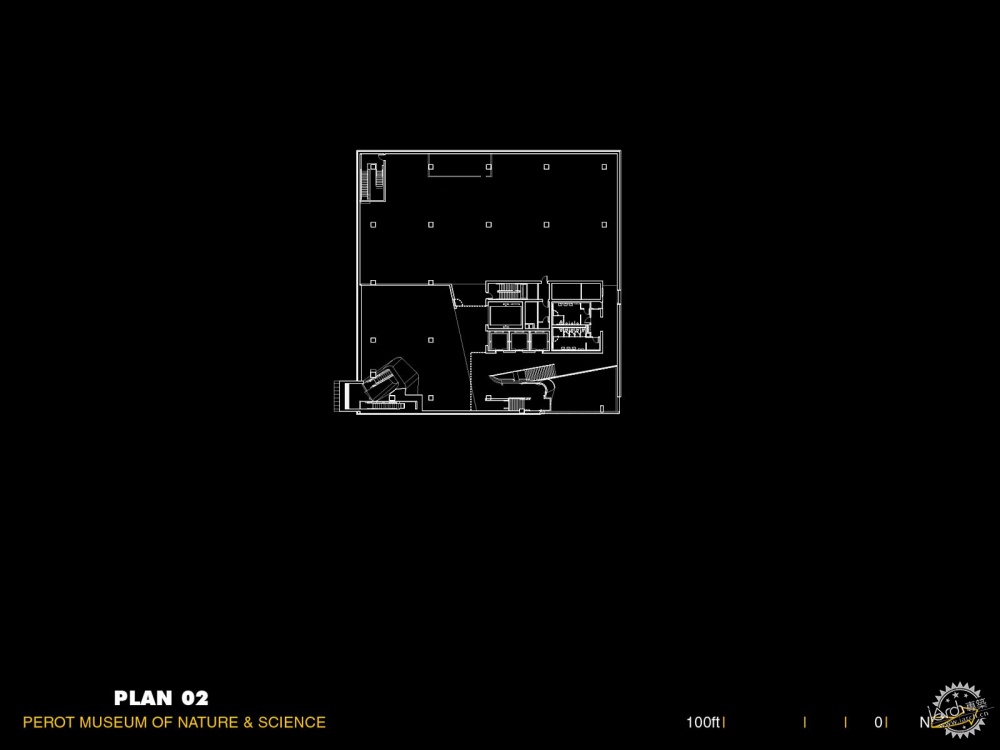
平面图 Plan
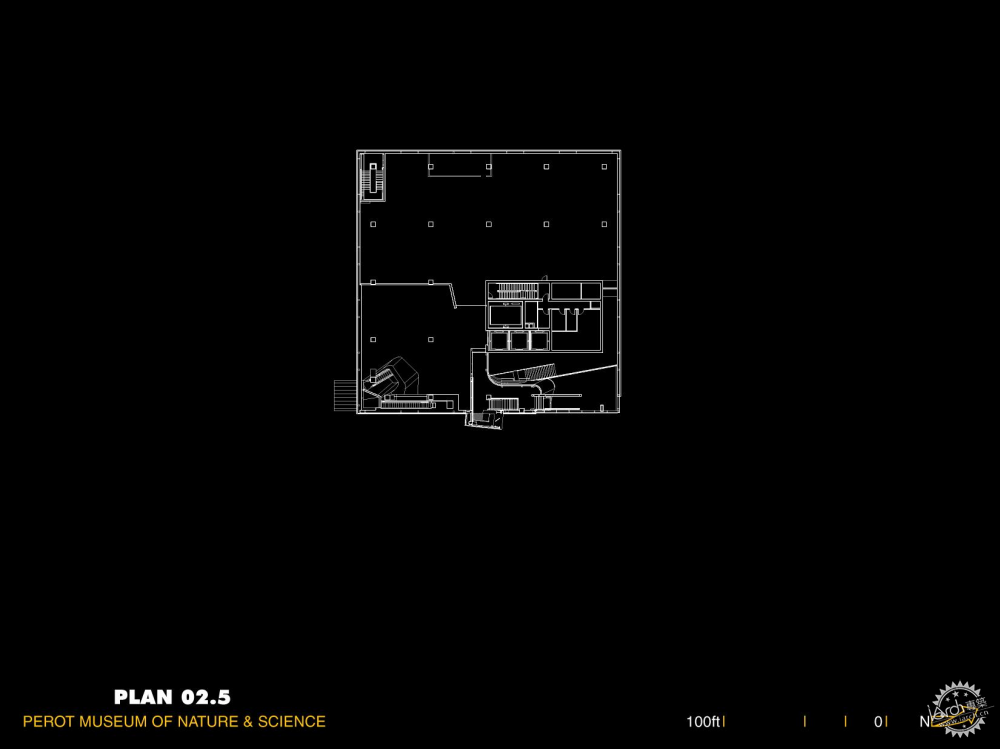
平面图 Plan

平面图 Plan
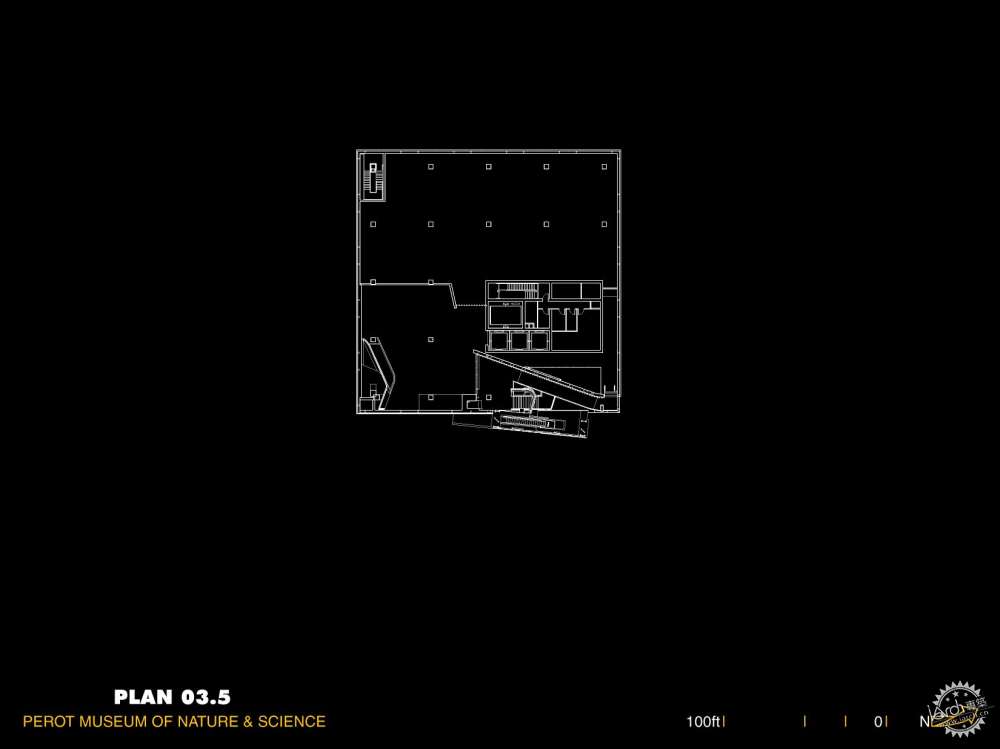
平面图 Plan

平面图 Plan
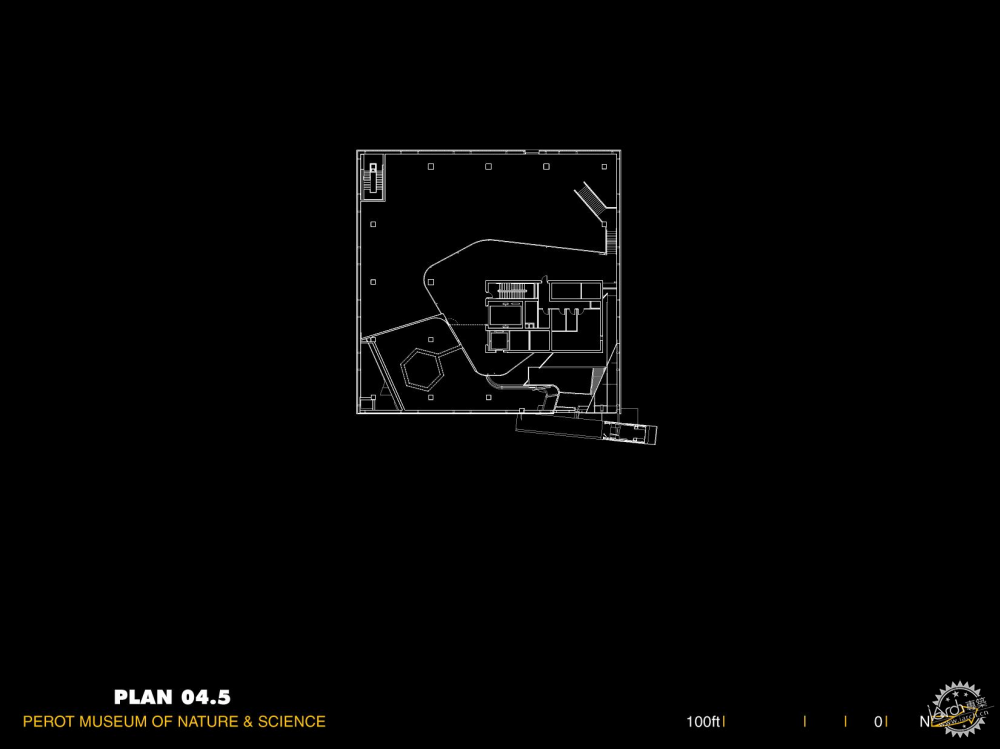
平面图 Plan

平面图 Plan
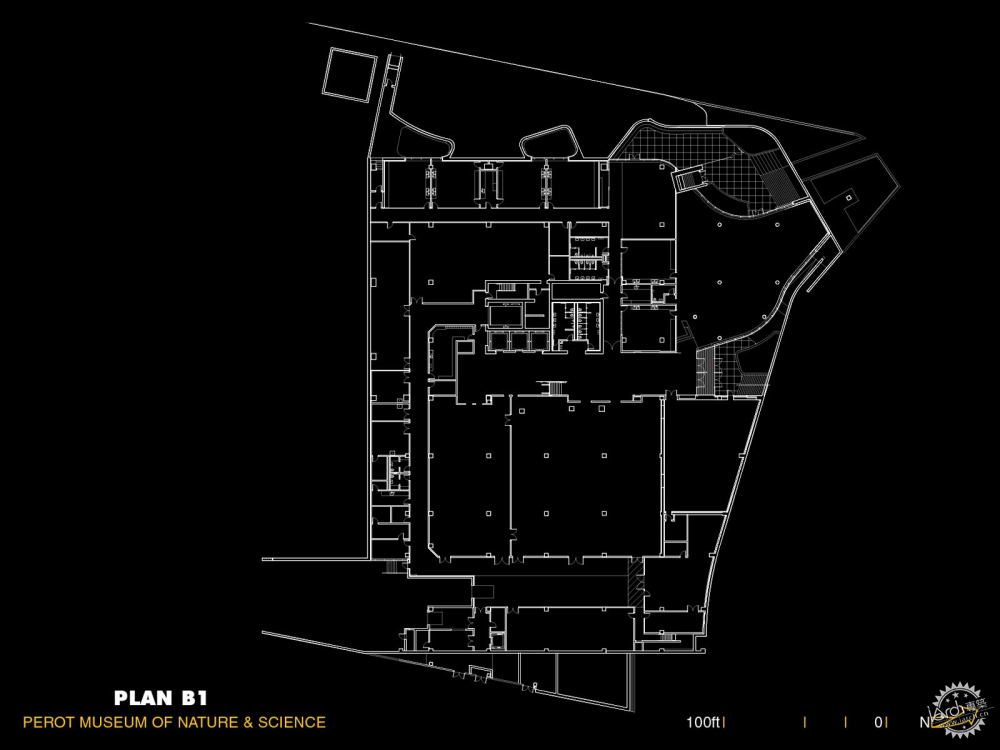
平面图 Plan
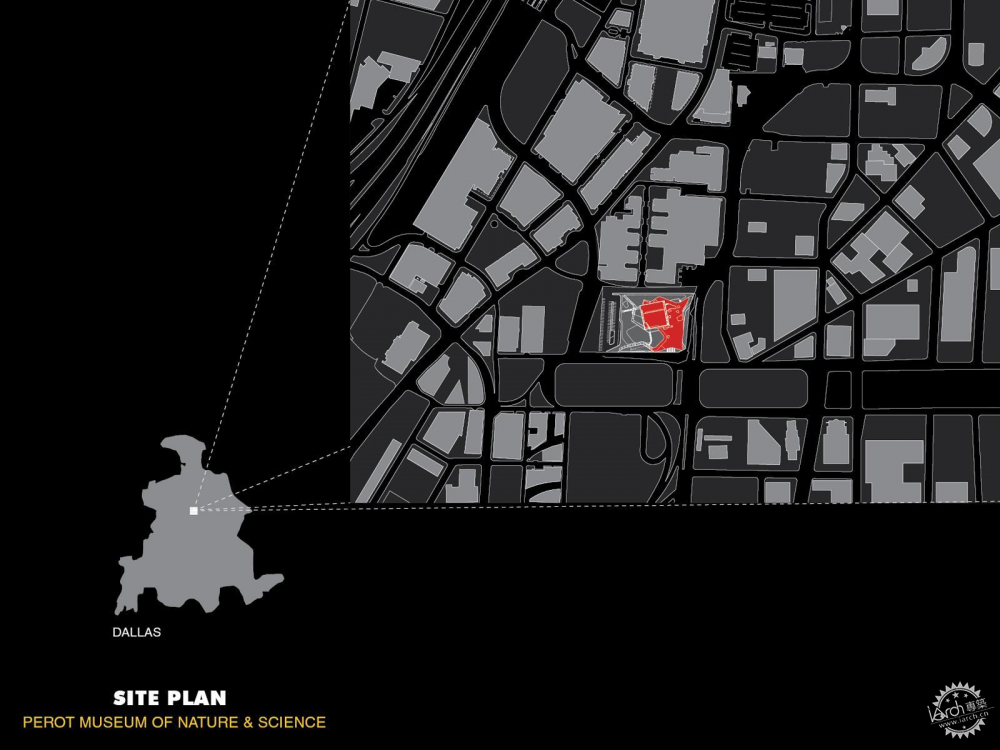
场地平面图 Site Plan

截面图 Section
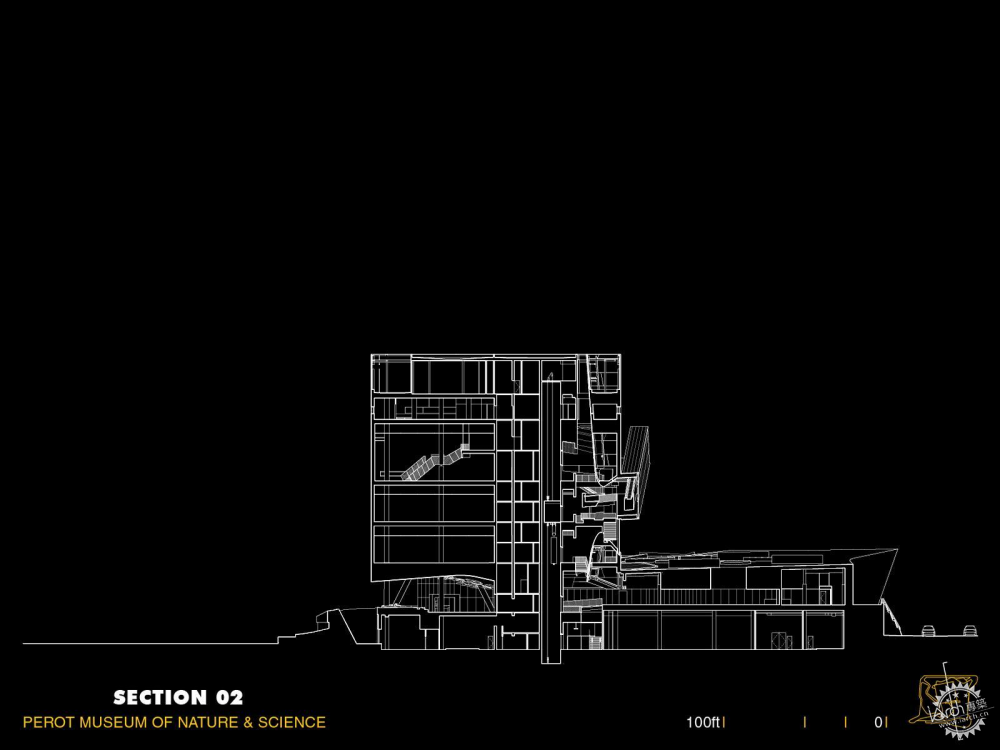
截面图 Section
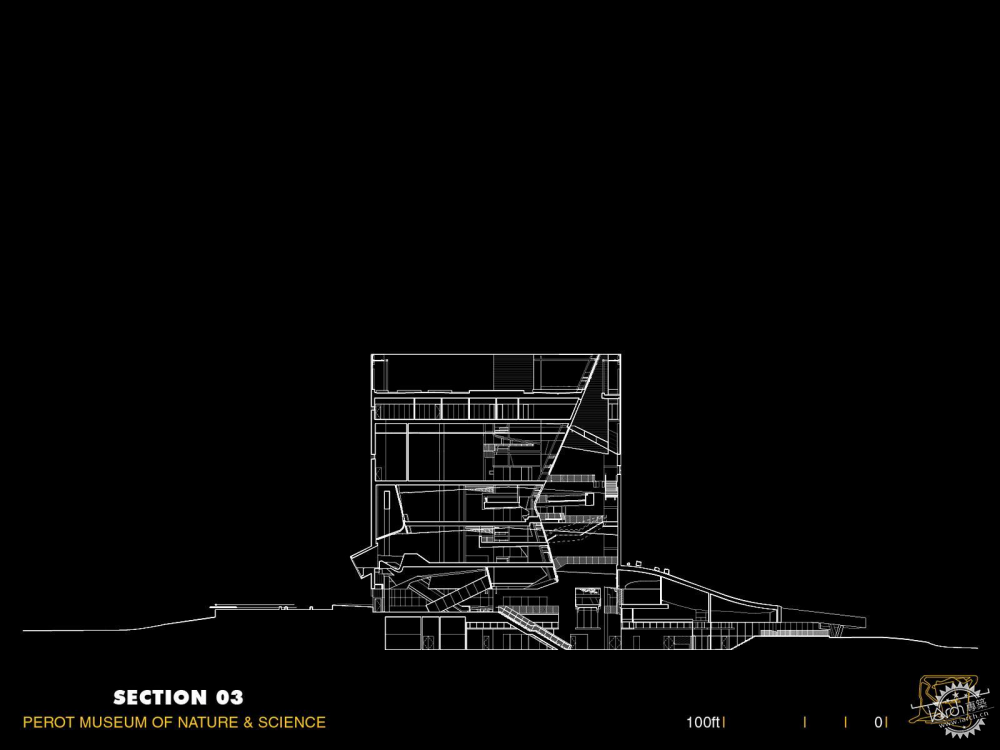
Section 截面图
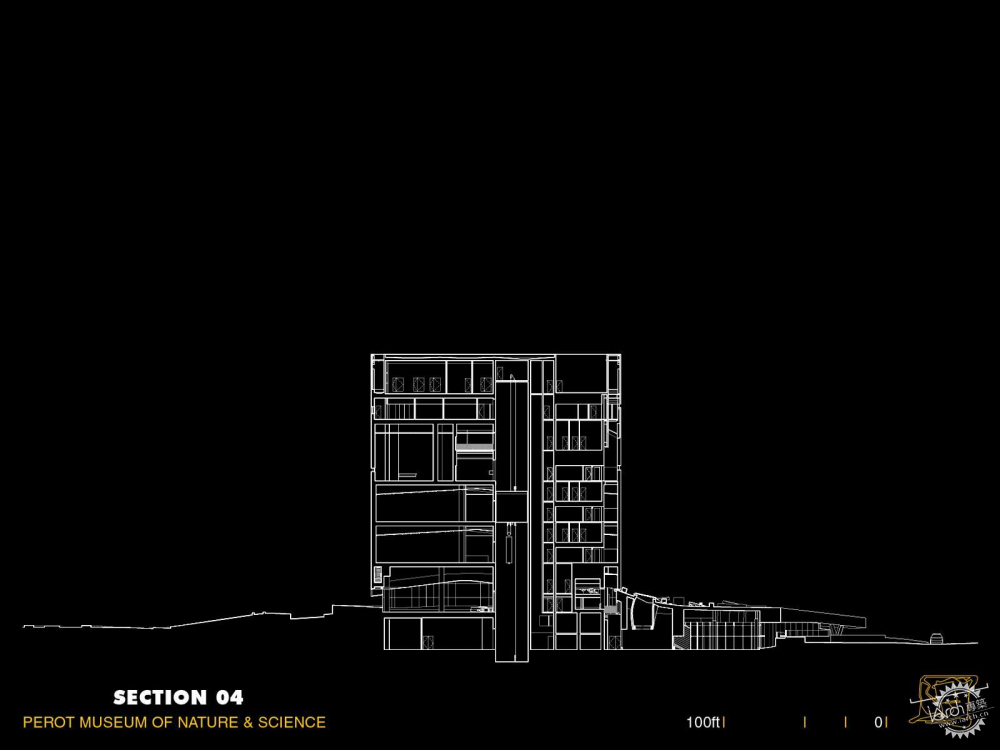
Section 截面图
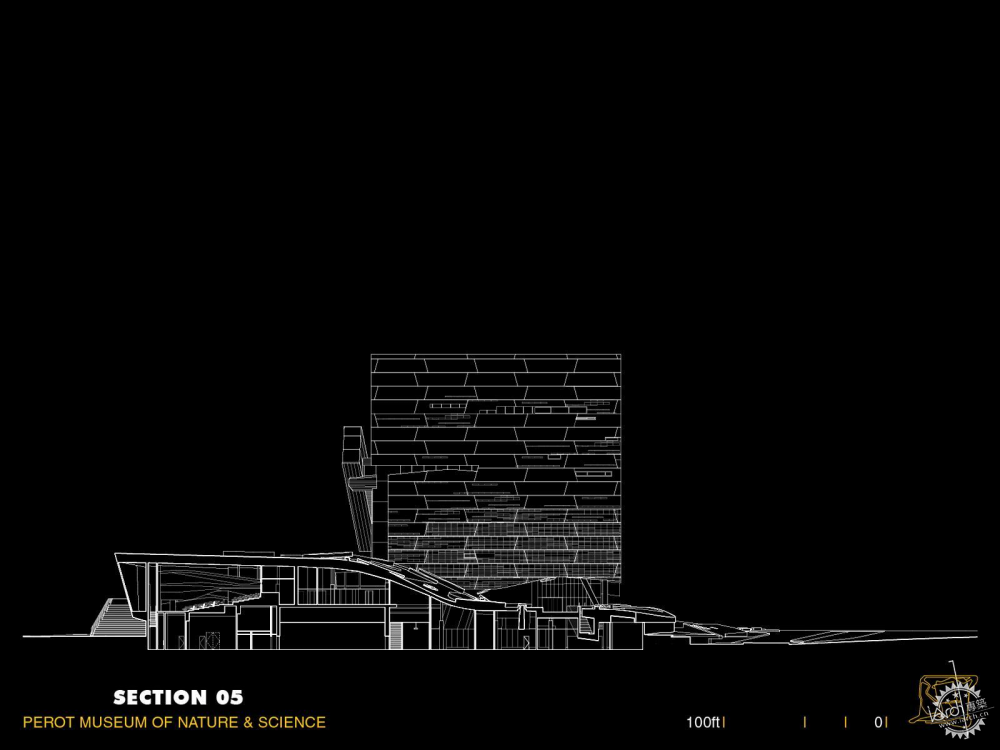
Section 截面图

Section 截面图

三维轴测图 Axonometric
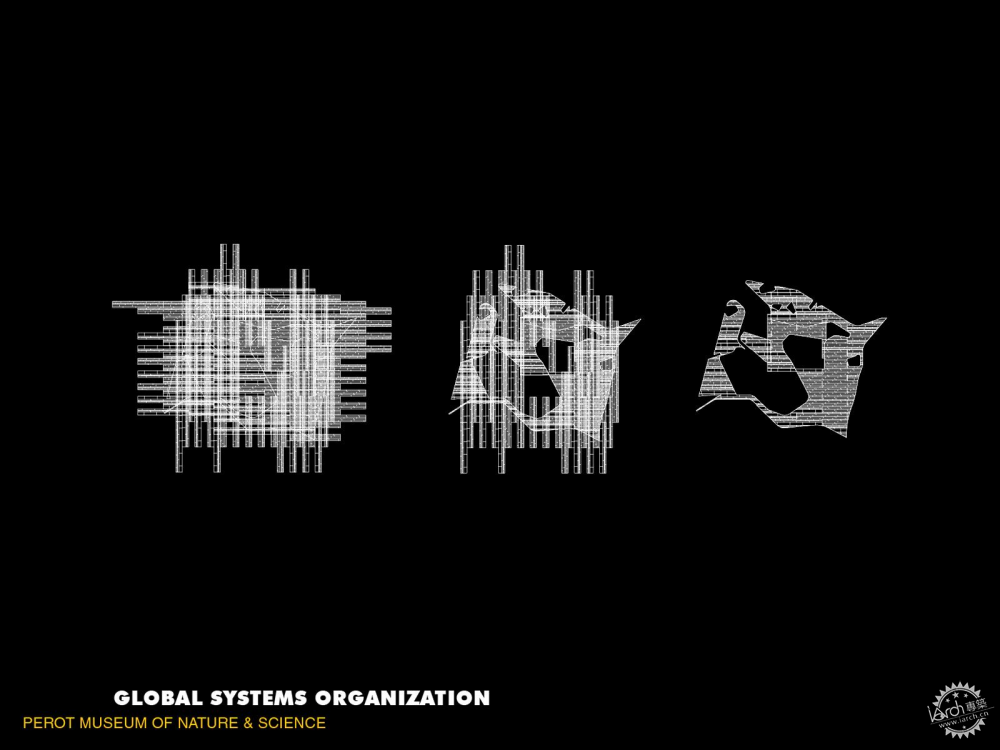
草图 Diagram
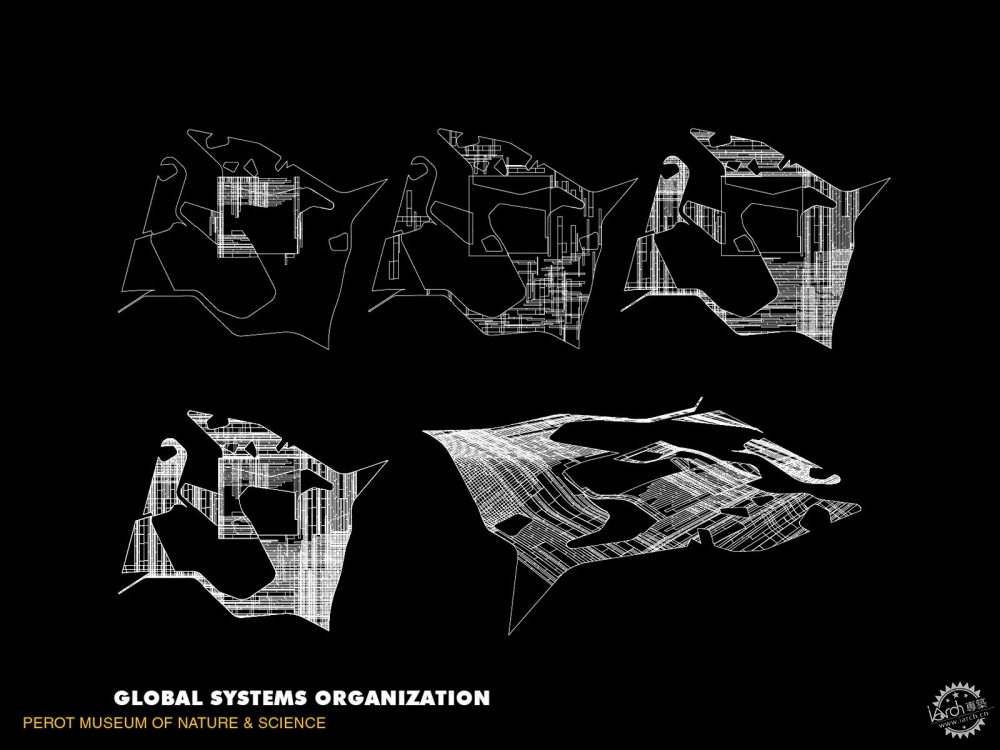
草图 Diagram
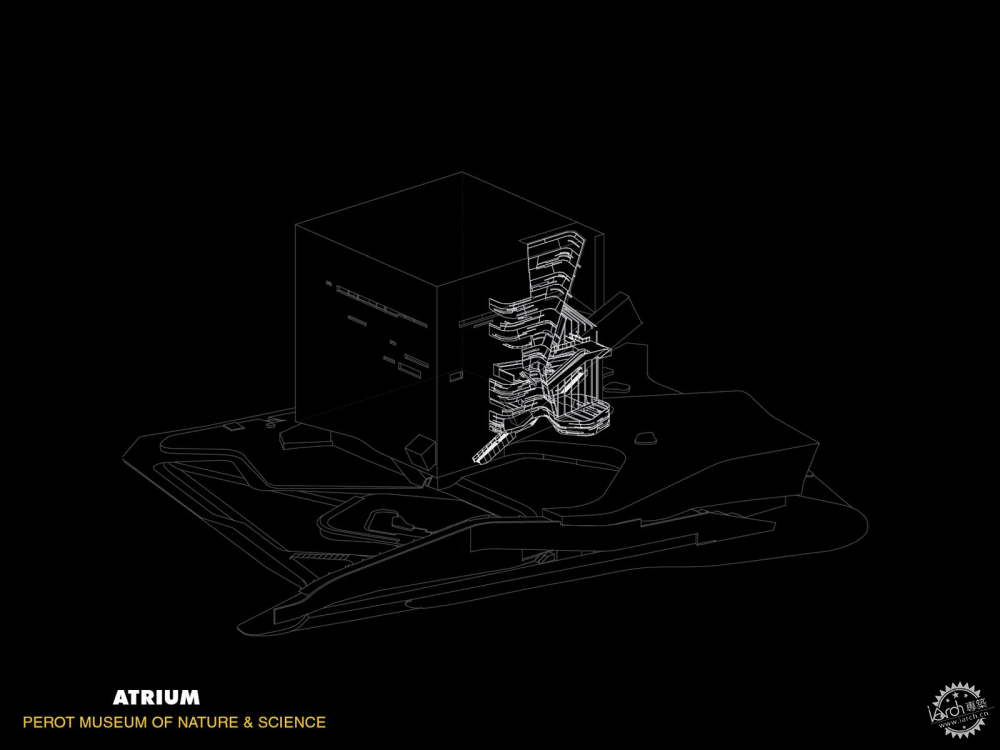
草图 Diagram
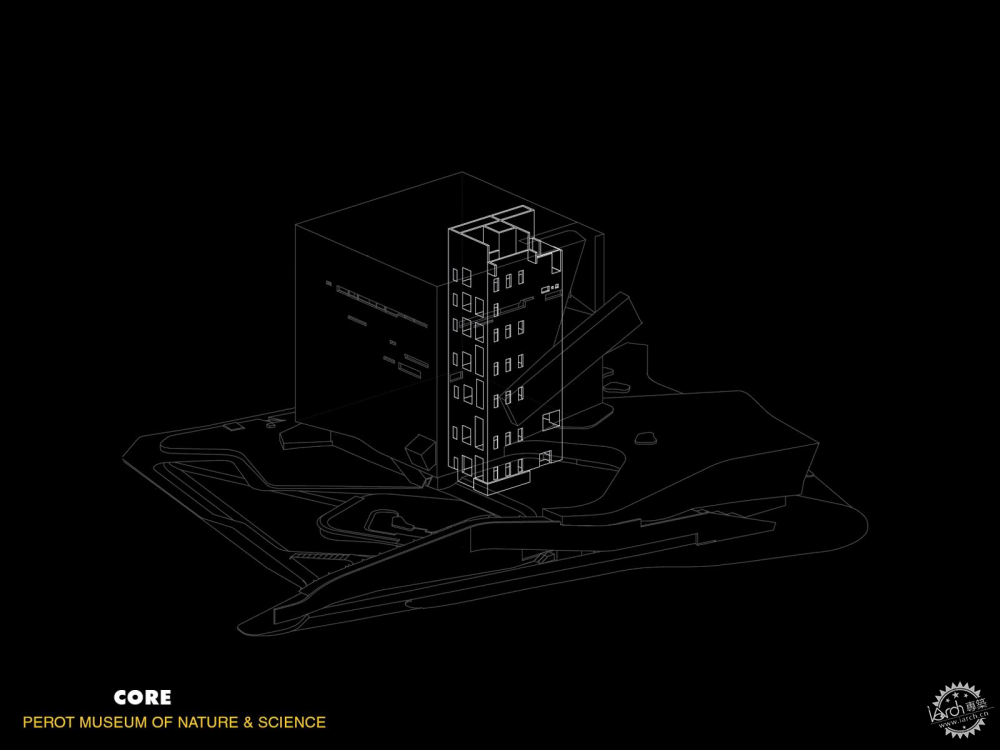
草图 Diagram
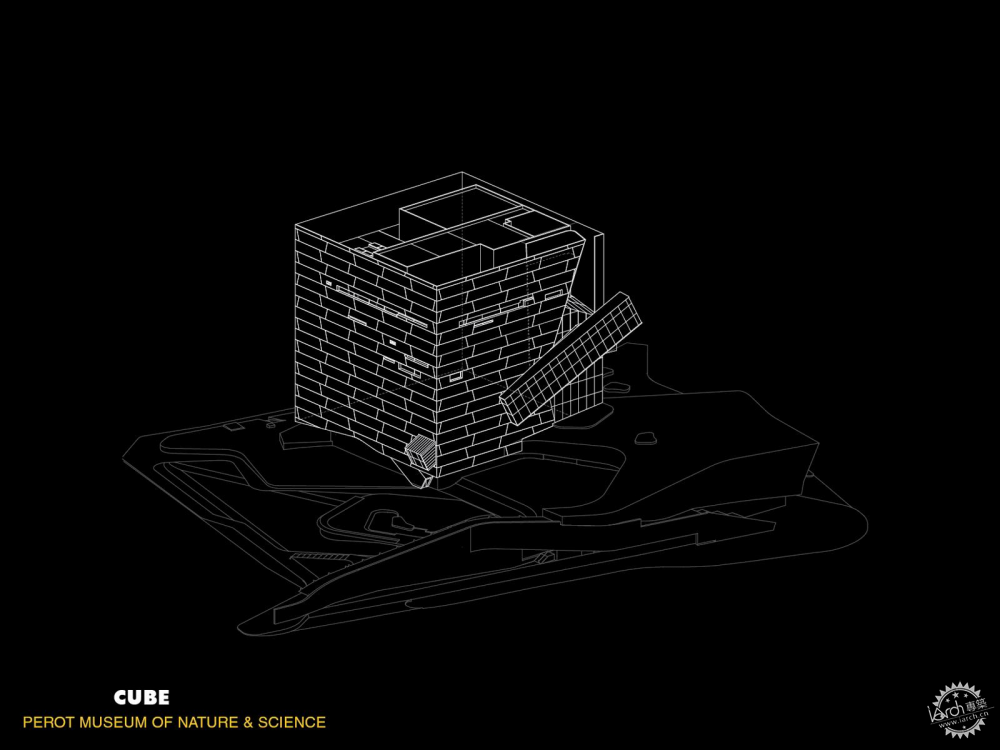
草图 Diagram
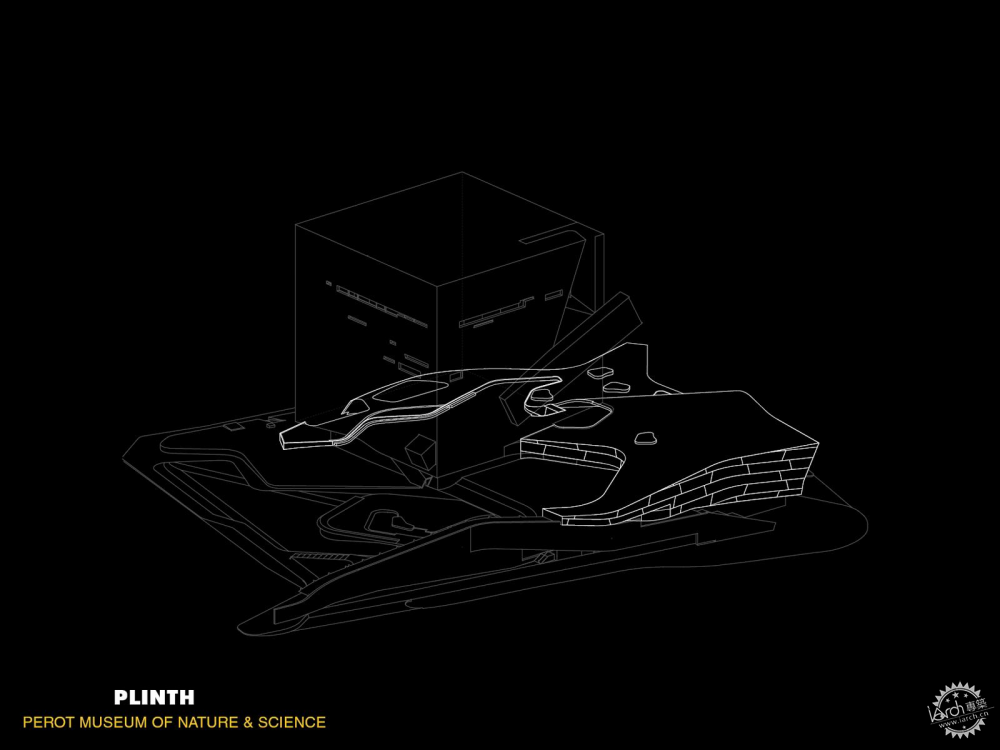
草图 Diagram
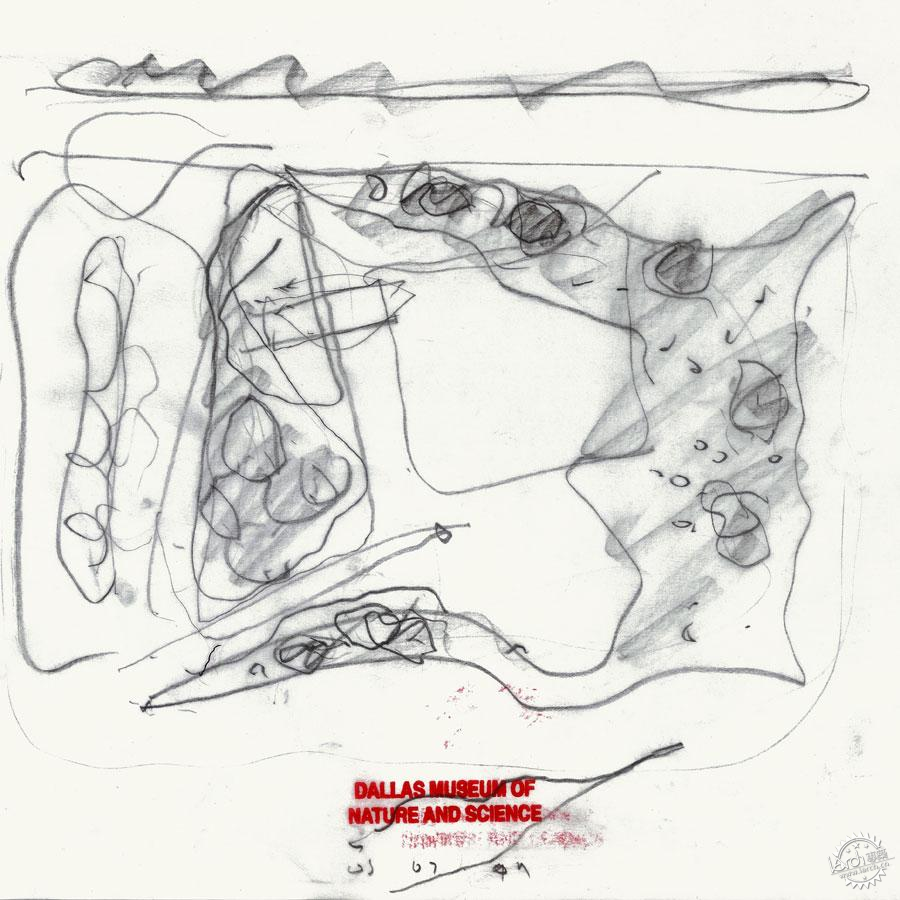
手工草图 Sketch
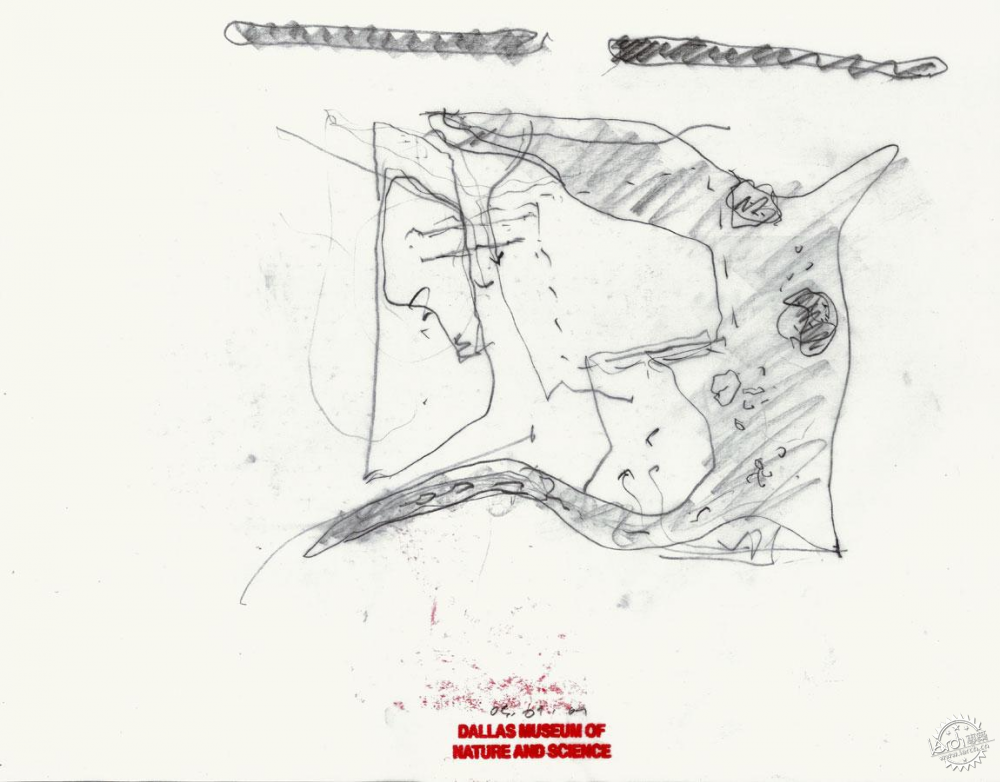
手工草图 Sketch

手工草图 Sketch
特别鸣谢翻译一组10号 张晓丽 提供的翻译,译稿版权归译者所有,转载请注明出处。
Architects: Morphosis
Location: Dallas, Texas, USA
Director Of Technology & Bim: Synthesis
Associate Architect: Good Fulton & Farrell
Structural Engineer: Datum Engineers
Consulting Structural Engineer: John A. Martin Associates, Inc.
Mechanical Electrical Plumbing Engineer: Buro Happold
Civil Engineer: URS Corporation
Area: 16,722 sqm
Year: 2012
Photographs: Iwan Baan, Courtesy of Morphosis
Museums, armatures for collective societal experience and cultural expression, present new ways of interpreting the world. They contain knowledge, preserve information and transmit ideas; they stimulate curiosity, raise awareness and create opportunities for exchange. As instruments of education and social change, museums have the potential to shape our understanding of ourselves and the world in which we live.
As our global environment faces ever more critical challenges, a broader understanding of the interdependence of natural systems is becoming more essential to our survival and evolution. Museums dedicated to nature and science play a key role in expanding our understanding of these complex systems.
The new Perot Museum of Nature and Science in Victory Park will create a distinct identity for the Museum, enhance the institution’s prominence in Dallas and enrich the city’s evolving cultural fabric. Designed to engage a broad audience, invigorate young minds, and inspire wonder and curiosity in the daily lives of its visitors, the Museum will cultivate a memorable experience that will persist in the minds of its visitors and that will ultimately broaden individuals’ and society’s understanding of nature and science.
The Museum will strive to achieve the highest standards of sustainability possible for a building of its type. High performance design and incorporation of state of the art technologies will yield a new building that will minimize its impact on the environment.
This world class facility will inspire awareness of science through an immersive and interactive environment that actively engages visitors. Rejecting the notion of museum architecture as neutral background for exhibits, the new building itself becomes an active tool for science education. By integrating architecture, nature, and technology, the building demonstrates scientific principles and stimulates curiosity in our natural surroundings.
The immersive experience of nature within the city begins with the visitor’s approach to the museum, which leads through two native Texas ecologies: a forest of large native canopy trees and a terrace of native desert xeriscaping. The xeriscaped terrace gently slopes up to connect with the museum’s iconic stone roof. The overall building mass is conceived as a large cube floating over the site’s landscaped plinth. An acre of undulating roofscape comprised of rock and native drought-resistant grasses reflects Dallas’s indigenous geology and demonstrates a living system that will evolve naturally over time.
The intersection of these two ecologies defines the main entry plaza, a gathering and event area for visitors and an outdoor public space for the city of Dallas. From the plaza, the landscaped roof lifts up to draw visitors through a compressed space into the more expansive entry lobby. The topography of the lobby’s undulating ceiling reflects the dynamism of the exterior landscape surface, blurring the distinction between inside and outside, and connecting the natural with the manmade.
Moving from the compressed space of the entry, a visitor’s gaze is drawn upward through the soaring open volume of the sky-lit atrium, the building’s primary light-filled circulation space, which houses the building’s stairs, escalators and elevators. From the ground floor, a series of escalators bring patrons though the atrium to the uppermost level of the museum. Patrons arrive at a fully glazed balcony high above the city, with a bird’s eye view of downtown Dallas. From this sky balcony, visitors proceed downward in a clockwise spiral path through the galleries. This dynamic spatial procession creates a visceral experience that engages visitors and establishes an immediate connection to the immersive architectural and natural environment of the museum.
The path descending from the top floor through the museum’s galleries weaves in and out of the building’s main circulation atrium, alternately connecting the visitor with the internal world of the museum and with the external life of the city beyond. The visitor becomes part of the architecture, as the eastern facing corner of the building opens up towards downtown Dallas to reveal the activity within. The museum, is thus, a fundamentally public building – a building that opens up, belongs to and activates the city; ultimately, the public is as integral to the museum as the museum is to the city.
|
|
